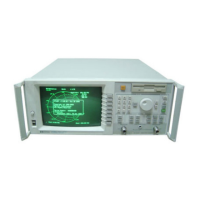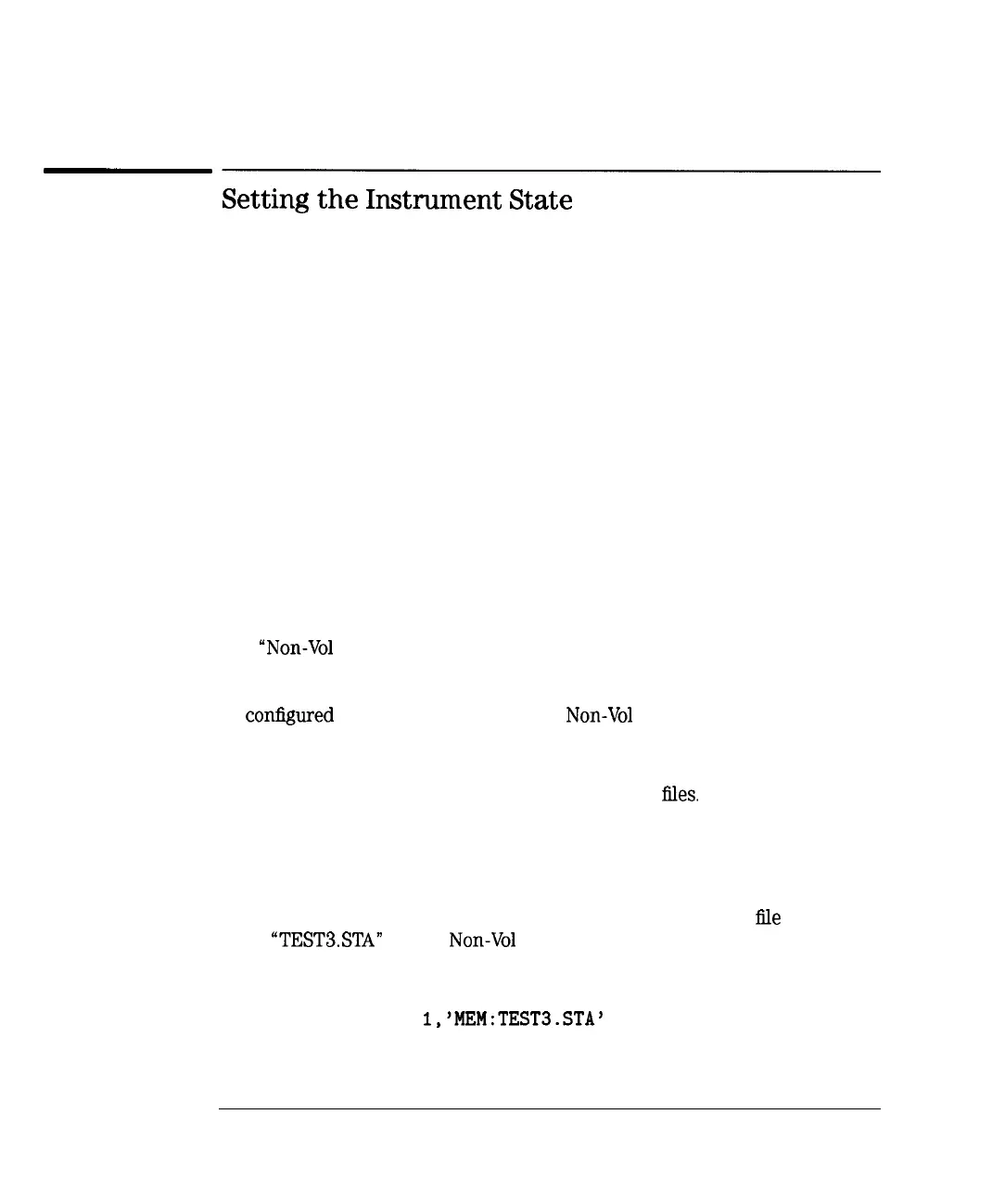I
-
Automating Measurements
Automated Measurement Setup and Control
Setting
the
Instrument
State
A DUT will often undergo several different tests while at a single test station.
The analyzer’s parameters (such as sweep frequencies, output power,
markers, and limits) must be set to the desired values before each test is
done. In an automated test system the controlling computer modifies the
instrument settings for the operator. The analyzer offers several techniques
for quickly changing the instrument’s measurement parameters:
l
Recall of instrument states from disk
l
The learn string HP-IB command (*LRN)
l
SCPI commands that change specific parameters
Recalling Instrument
The analyzer has two built-in memory (RAM) disks, “Non-Vol RAM Disk” and
States From Disk
“Volatile RAM Disk”. In addition, the analyzer has a built-in 3.5” floppy disk
drive accessible on the front panel. A “RAM Disk” is a block of memory
inside the analyzer which you can access in the same way that you access
files on a floppy disk.
The
“Non-V01
RAM Disk” is non-volatile, meaning that its contents are
preserved while the analyzer is turned off. The contents of the “Volatile RAM
Disk” are erased when the analyzer is turned off. The Volatile RAM Disk can
be
conllgured
to be much larger than the
Non-V01
RAM Disk, allowing it to
hold many more instrument states.
For all three types of disk, the instrument settings and calibrations associated
with several tests can be saved to instrument state
illes.
The instrument
states can later be recalled during the test sequence. The advantage of using
RAM disks rather than the 3.5” floppy disk is that recalling a state from RAM
Disks takes several seconds less than recalling a state from the floppy disk.
For example, suppose the instrument settings are entered for the third test of
a sequence of tests. The instrument settings can be saved in a
ille
with the
name
“TEST3.STA”
on the
Non-V01
RAM Disk. When the third test must
be performed, the control program can recall the instrument state from the
non-volatile RAM disk with this SCPI command:
MMEM:LOAD:STATe l,‘MEM:TEST3.STA’
7-46

